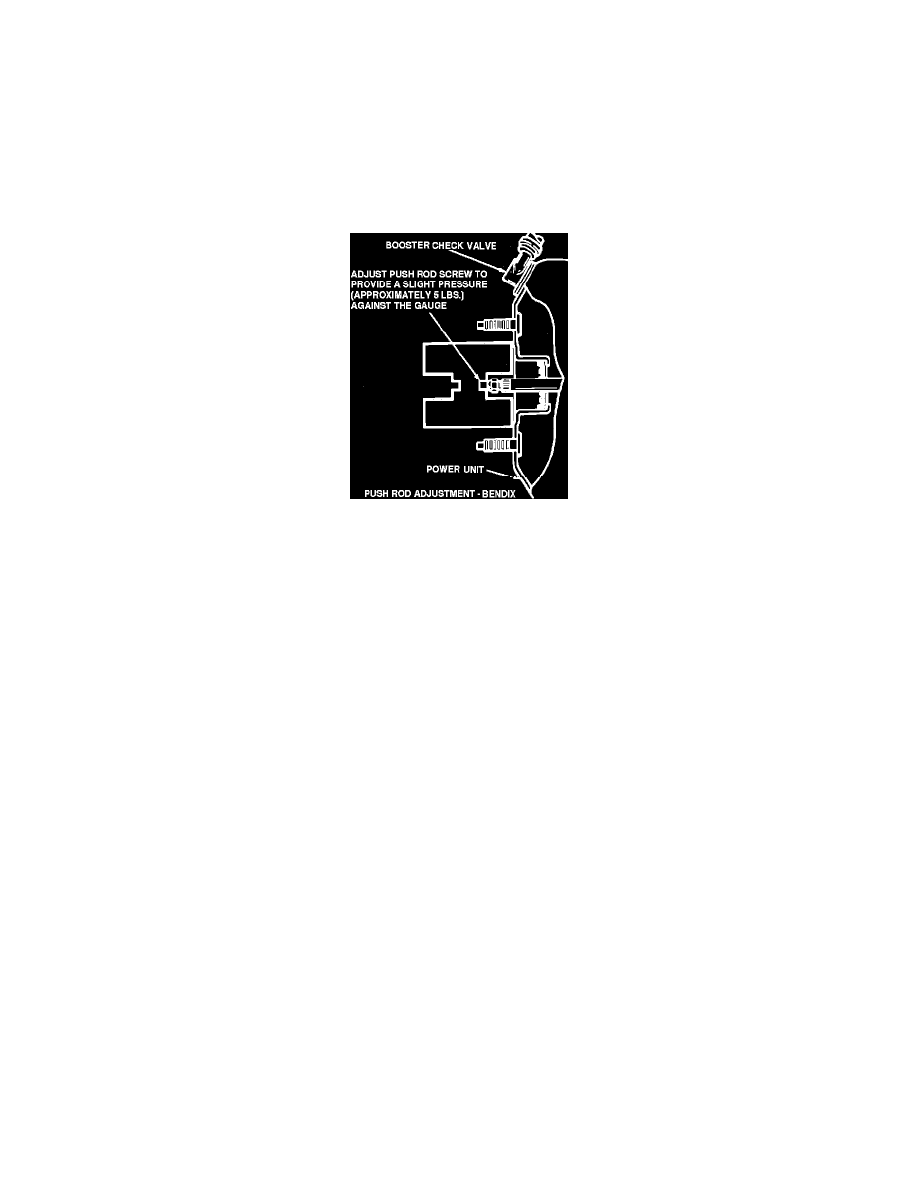Crown Victoria V8-4.6L SOHC VIN 6 (1996)

Vacuum Brake Booster: Adjustments
Without Antilock Brakes
Proper adjustment of the master cylinder pushrod is necessary to ensure proper operation of the power brake system. A pushrod that is too long will
prevent the master cylinder piston from completely releasing hydraulic pressure, eventually causing the brakes to drag. A pushrod that is too short will
cause excessive brake pedal travel and cause groaning noises to come from the booster when the brakes are applied. A properly adjusted pushrod that
remains assembled to the booster with which is was matched during production should not require service adjustment. However, if the booster, master
cylinder or pushrod are serviced, the pushrod may require adjustment.
1. Disconnect master cylinder from booster, leaving brake lines connected. Secure cylinder to prevent lines from being damaged.
2. Start engine and operate engine at idle speed.
Fig. 1 Master Cylinder Pushrod Adjustment. Bendix Type Vacuum Booster
3. With engine running, position gauge over pushrod. Gauge should bottom against booster housing with a force of approximately 5 lb applied to
pushrod.
4. If force required to seat gauge exceeds 5 lb, shorten length of pushrod. If force required to seat gauge is less than 5 lb, lengthen pushrod. Ensure
pushrod is properly seated in booster when performing gauge inspection.
5. Install master cylinder, then remove reservoir cover.
6. With engine running, observe fluid surface in reservoir when brakes are applied and released rapidly. If no movement is observed on fluid surface,
pushrod is adjusted too long.
